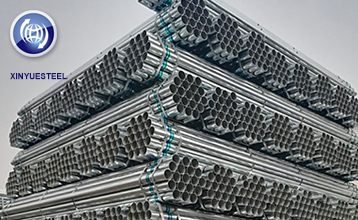The enterprise team continues to grow, and many leading enterprises have been formed
Nov. 03, 2021
Based on the "Eighth Five-Year" and "Ninth Five-Year" refractory science and technology achievements, after 2000, many professional technical and management personnel (including retirees) from scientific research institutes and state-owned enterprises have successively "goed to the sea" to set up factories or join private enterprises or private enterprises. Capital cooperates with universities to establish enterprises, or a private enterprise is "fissioned" into multiple private enterprises, gradually forming a relatively complete refractory including refractory raw materials, product processing and manufacturing, equipment, kilns, testing instruments, automatic control, software applications, etc. Material industry chain. The rapid development of private enterprises, the increasing number and level of continuous improvement, have become the main force in China's refractory industry, but they have also brought about serious problems such as production capacity and excess production, small, scattered, and large enterprises, low concentration, and disorderly competition. In 2006, Ruitai Technology, established by the Refractory Institute of China Building Materials Institute, which was responsible for the main tasks of "Eighth Five-Year" and "Ninth Five-Year" refractory material technology research in the building materials industry, was listed on the Shenzhen Stock Exchange; in the same year, a series of energy-saving fiber products such as ceramic fiber were used for scientific and technological achievements. The main business of Luyang shares was listed on the Shenzhen Stock Exchange; Pu Nai shares and Beijing Lier were listed on the Shenzhen Stock Exchange in 2008 and 2010; the domestic synthetic resin leader Shengquan Group was listed on the Shanghai Stock Exchange in July 2021. Sinosteel Luonai Science and Technology Co., Ltd., established after the merger and reorganization of Sinosteel Luonai Institute Co., Ltd. and Sinosteel Refractory Co., Ltd., increased capital and shares, began to sprint to go public on the Sci-tech Innovation Board at the end of 2020; Shandong Refractories, Zhejiang Red Eagle, Zhejiang Self-reliance , Haicheng Houying, etc. cooperate closely with scientific research institutes and universities to develop and grow. These companies and groups have developed into industry-leading refractory companies with a certain degree of international reputation. Baowu Group is or may be optimizing and reorganizing its subsidiaries such as Wuhan Iron and Steel Refractories, Maanshan Iron and Steel Refractories, Taiyuan Iron and Steel Refractories, Shandong Refractories, and its trustee Sinosteel Luonai Technology Company. For example, through asset reorganization of Ruitai Technology (including Xianggang Refractory Company, etc.), Wuhan Iron and Steel Refractory Company and Maanshan Iron and Steel Refractory Company, etc., holding Ruitai Technology. After optimization, reorganization and integration, these state-owned refractory enterprises will play an important industry leading role in the new development stage.

Equipment automation, intelligence, modern management, and green manufacturing in the refractory industry have been continuously improved.
With the implementation of the "Made in China 2025" plan, the integration of the two technologies has continued to deepen, and the automation level, intelligence level, and environmental protection level of the refractory industry have made great developments. Taking the rebuilt and expanded Luoyang Lier Refractory Material Company as an example, the entire line of automation and even intelligence has been realized from raw material distribution, weighing, mixing, and cloth systems to feeding, forming, picking bricks, conveying, firing, warehousing, and testing. In this way, the factory DCS control center was established by adopting the DCS-Distributed Contorl System (DCS-Distributed Contorl System). Management systems such as ERP and MES have been promoted and new generation technologies such as robotics, Internet of Things, cloud computing, and big data have been applied. Many refractory companies have entered the ranks of green factories. The refractory industry in China is shifting towards equipment automation, intelligence, modern management, and green factory development. Labor efficiency, product quality, working environment, environmental protection level, etc., are not what they used to be, and they have all been greatly improved and improved.



